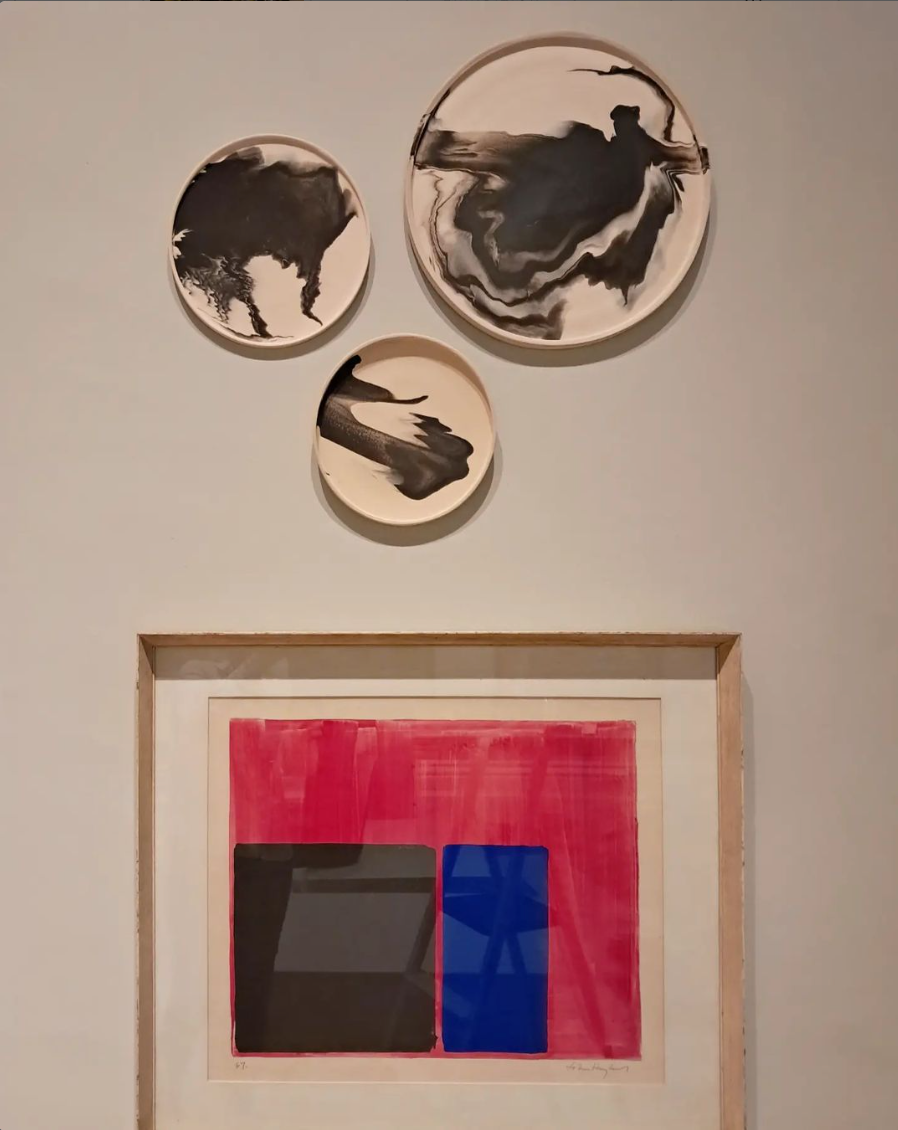Artist Q&A: Luke Eastop
- Thrown
- Sep 27, 2024
- 3 min read

Portrait photograph by Dav Stewart
Luke Eastop works from his studio in Margate, UK. His love of objects and craft began from his potter grandfather and a house and studio full of his work as well as notes, sketches and ephemera. Luke's own ceramics also draw from typography, map-making and an interest in geometry to create minimal, considered forms, thrown on the wheel and sharply trimmed with an exquisite eye to detail.

With our long-awaited new collection by Luke just added to our website, we also put a few questions to the maker to find out more about the life and thought behind the work:
What was your first experience with clay?
L: 'In terms of handling it, there was an unsuccessful attempt at throwing an eggcup on the wheel at my grandfather’s studio, which sowed a seed of vengeance which may have fuelled my later career. Apart from that, probably the smell of the studio, or the wonder at some of the things my grandfather created; he made a series of large, slip cast eggs which he decorated with a perfect, pebbly dolomite glaze and spattered with oxides. They seemed so realistic to me as a kid, but they were the size of an ostrich egg and I was completely aware that he had made them.'

What was your biggest lesson learnt from your grandfather?
L: 'When he was studying painting in France after the Second World War, his teacher told him that he was ‘the only Englishman he’d met who understood form’! I think that sense was pretty evident in his pots, and maybe I was lucky enough to have some of that passed to me, if only through exposure to the objects he made.'


How important is the material to your work?
L: 'After form, material is the most important aspect of my work. The tones and textures of my pieces are made by blending different clays and oxides together, leaving the exterior unglazed makes this the extent of the ‘decoration’. Each piece is a form, rendered in a material, and when it works, that says all I want to say.'
How important is functionality to your work?
L: 'I’m drawn to shapes that are on the edge of functionality; vases that stand on a delicate foot or bowls that hold the smallest volume for their diameter and height. Because I think of the pieces in terms of their profile, even the ones that are more obviously useful I think of in sculptural terms.'
Do you find it easy to switch between working in 2D and 3D with your drawings and ceramics?
L: 'I always think of throwing as a kind of drawing; the clay is, handily, spinning about an axis so all you have to do is sculpt a profile shape, which gets extruded into three dimensions. So when I make a drawing of the profile of a pot, it’s as good a mock-up as I can make without making a 3D model.'
Are you considering works as a group as you work or do you find the relationships after?
L: 'I tend to think of them in modules, of size, proportion and colour, and so they naturally sit together when displayed in groups or pairs. I think this effect also works if they’re in different locations in a space; apart but on the same shelf, or across a room.'

Can you describe your studio to us? Do you listen to anything as you work?
L: 'Distinct zones, but smudged together in one room. I like being able to take some samples or a half-finished piece from one shelf and place them alongside finished pieces in my photography area, photograph them and edit the image at my desk a few feet away, and then go back to making at the wheel at the adjacent side of the studio. In between those spaces I have a Kef hifi from the 70s with huge, floor standing speakers. It’s the best system I’ve ever heard, it’s always on! '


What's your biggest point of inspiration?
L: 'I try to make pots that don’t look like pots as such, so things seep in from other sources: industrial objects, nature, geometry. And then the motivation to keep making objects is the pay-off when they come out of the kiln and I get to play with them, arrange them, photograph them, and see how they interact with the world.'
_







enhance your connection and embrace confidence with sensual accessories made for every fantasy. with sex toys in kolkata, enjoy a blend of elegance, privacy, and innovation that transforms your private moments. experience fast, discreet delivery and top-quality materials that ensure both comfort and satisfaction for singles and couples alike.
Feel the heat of passion in antarvasna marathi story, where local flavor meets pure desire. Every line captures emotions, lust, and fantasy that blend into unforgettable storytelling. Experience culture and pleasure in one perfect mix.
Enjoy crystal-clear visuals and smooth streaming with redwap hd, offering high-definition videos for the best viewing pleasure. Dive into trending clips and experience premium entertainment from the comfort of your device.
I really enjoyed this insightful Q&A with Luke Eastop — his artistic process feels refreshingly authentic and deeply human. The way he blends tradition with modern design truly reflects creativity in motion. It’s that perfect balance of old and new, much like the Stranger Things Outfits that fuse vintage aesthetics with today’s pop culture flair.
The gameplay in Traffic Jam 3D is characterized by exhilaration and intrigue, as the journey is as dramatic as the destination. You will have the opportunity to experience every vibrant traffic jam scene that arises.